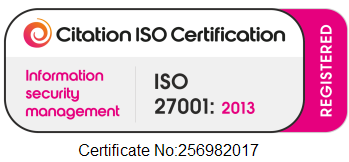Effects Of Healthcare Shortages In The UK
The UK’s National Health Service has been facing challenges for many years, even before the Coronavirus pandemic, with increasing demand for additional services, budget cuts and staff shortages. However, with unprecedented circumstances due to Covid-19, these challenges have only been amplified and the healthcare sector is in urgent need of qualified candidates to fill thousands of job vacancies.
These chronic shortages of NHS workers and ongoing recruitment challenges amongst healthcare hiring managers have led to a projected shortfall of 18 million health workers by 2030 according to The World Health Organisation (WHO).
Data published by NHS Digital reveals the extend of the crisis with a massive 93,806 full-time equivalent vacancies across the NHS in England at the end of November this year. This is up 23% from the 76,082 vacancies at the end of March 2021 and up 13% from the 83,203 recorded at the end of June 2020 and is the highest number of vacancies recorded since the end of December 2019.
Patricia Marquis, England director for the Royal College of Nursing (RCN), said: “There just aren’t enough staff to deliver the care that is needed, and we now have a nursing workforce crisis. We should never have gotten into a position where we were so dependent on international workforces. We are on a knife-edge.”
NHS England has set aside an additional £10 million to pay for 8,000 more clinical placements in hospitals, which will go some way to helping but unfortunately, will not solve the problem entirely. This alarming trend of rising job vacancies, and big issues within nursing especially in acute and mental health posts mean the UK economy is likely to continue feeling the pressure into the new year.
With chronic understaffing comes a plethora of consequences, most notably for patient care, with life-threatening diseases at risk of late diagnosis, when treatments are less effective, more expensive and result in unnecessary emergency admissions.
If substantial staff shortages continue, we could see staff absences and patient waiting lists continue to grow, potentially undermining the future sustainability of healthcare services.
Executives want a properly resourced care system that would take pressure off the NHS and wants to see carers paid better, with a proper career structure and recognition of their skills.
Taking COVID-19 out of the equation the average time-to-fill for an RN was 81 days, and with healthcare turnover rates of almost 18%, talent acquisition teams need strategies and solutions to attract and recruit top healthcare talent — candidates who are focused on the patient experience throughout the entire continuum of care.
Posts urgently need to be filled to make sure communities receive the best care possible, and also to alleviate the strain care teams continue to face, against a backdrop of spiraling workloads and ever-growing backlogs of treatment.
Like our blogs? Sign up for our newsletter




Comments are closed